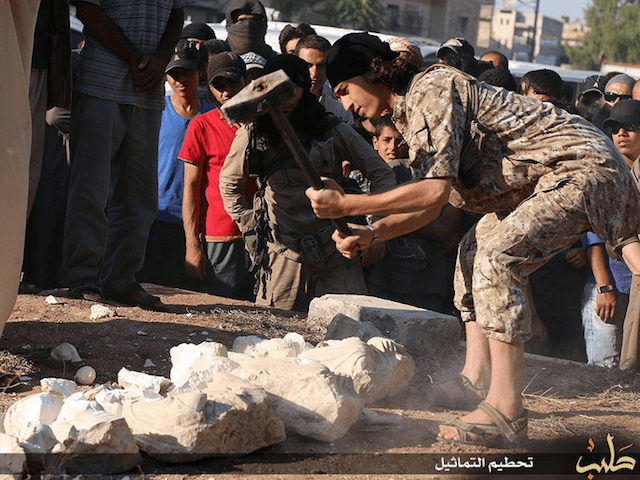This article originally appeared at The New York Times:
Islamic State militants indulged in new public displays of artifact destruction this week, sledgehammering a half-dozen statues said to have been stolen from the ancient Syrian city of Palmyra.
The militants also broke up a hidden 2,000-year-old lion statue they discovered in a Palmyra museum garden and demolished a 13th-century tomb near the northern Iraqi city of Kirkuk.
The destruction, publicized in photographs and statements posted by the Islamic State on social media and corroborated by officials and antiquities experts, underscored the risks to the archaeological heritage sites in Syria and Iraq, as well as the impunity of the militants now in command of large parts of both countries.
On Thursday, the Islamic State, also known as ISIS or ISIL, said it had smashed at least six statues from Palmyra seized from a smuggler in an area of Aleppo controlled by the group’s operatives in northern Syria.
On Friday, Iraqi antiquities experts said the Islamic State had wrecked a tomb dating from the middle of the 13th century about seven miles west of Hawija, a town in Kirkuk Province. Before-and-after photographs showed the rubble.
“This is a terrible and tragic addition to ISIS’s long list of never-ending and incomprehensible destruction of some of Iraq’s and Syria’s most important historic monuments,” said Ihsan Fethi, a heritage expert and member of the Iraqi Architects Society.
Dismissing international outrage over its pillaging of ancient treasures in the two countries, the Islamic State has said it regarded artifacts as sacrilegious vestiges that deserve to be obliterated. In propaganda videos and photos, the group has detailed the wreckage of a museum in Mosul, Iraq, and important archaeological sites in Nimrud, Hatra and Nineveh, Iraq.

COMMENTS
Please let us know if you're having issues with commenting.